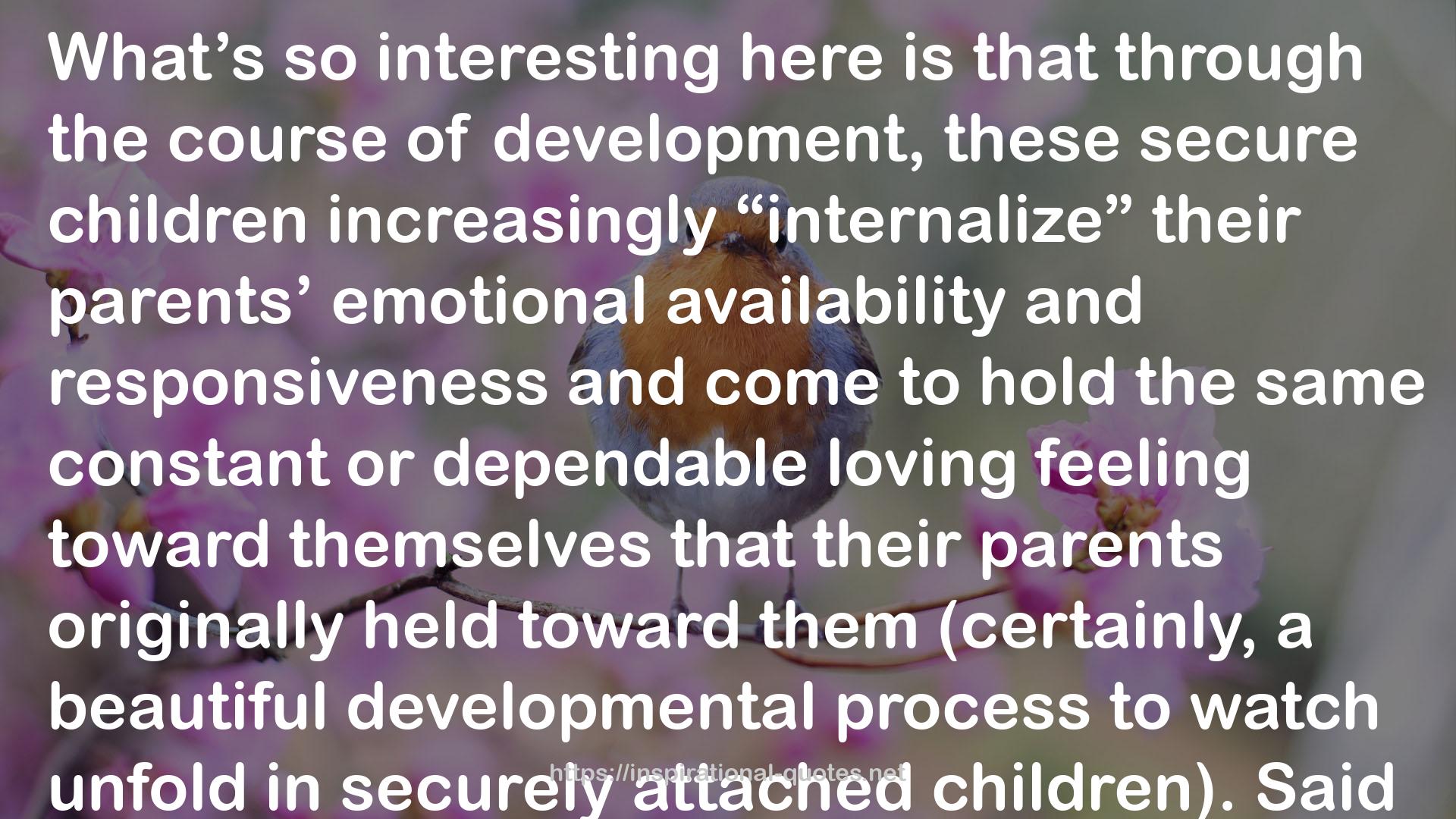" What’s so interesting here is that through the course of development, these secure children increasingly “internalize” their parents’ emotional availability and responsiveness and come to hold the same constant or dependable loving feeling toward themselves that their parents originally held toward them (certainly, a beautiful developmental process to watch unfold in securely attached children). Said differently, cognitive development increasingly allows securely attached children to internally hold a mental representation of their emotionally responsive parents when the attachment figures are away and they can increasingly soothe themselves as their caregivers have done—facilitating the child’s own capacity for affect regulation and independent functioning. Thus, as these children grow older and mature cognitively and emotionally, they become increasingly able to soothe themselves when distressed, function for increasingly longer periods without emotional refueling, and effectively elicit appropriate help or support when necessary. In this way, object constancy and more independent functioning develops—facilitating their ability to comfort themselves and become the source of their own self-esteem and secure identity as capable, love-worthy persons. Furthermore, they possess the cognitive schemas or internal working models necessary to establish new relationships with others that hold this same affirming affective valence. "
― , Interpersonal Process in Therapy: An Integrative Model
